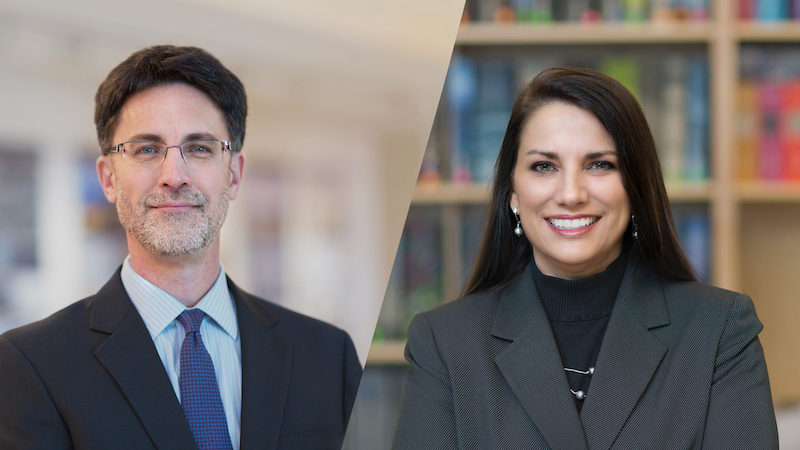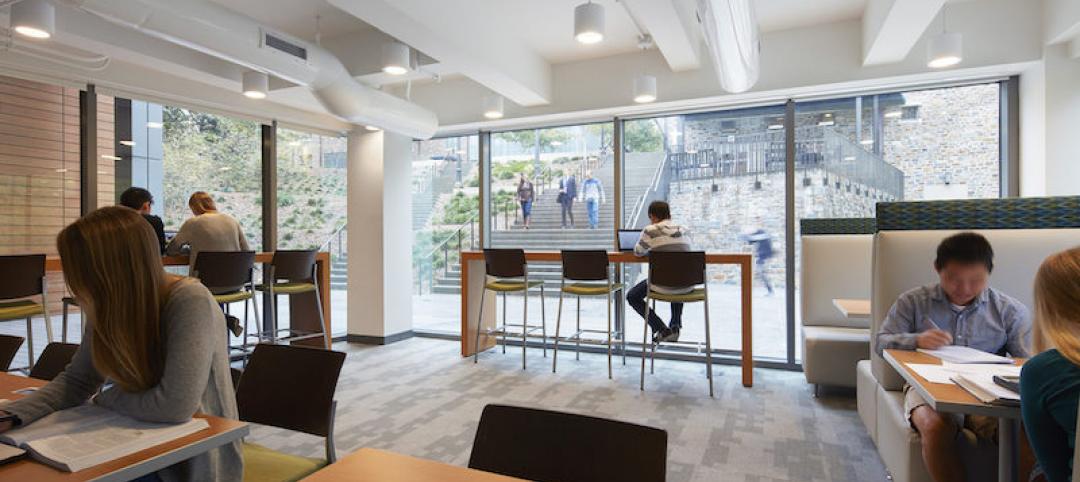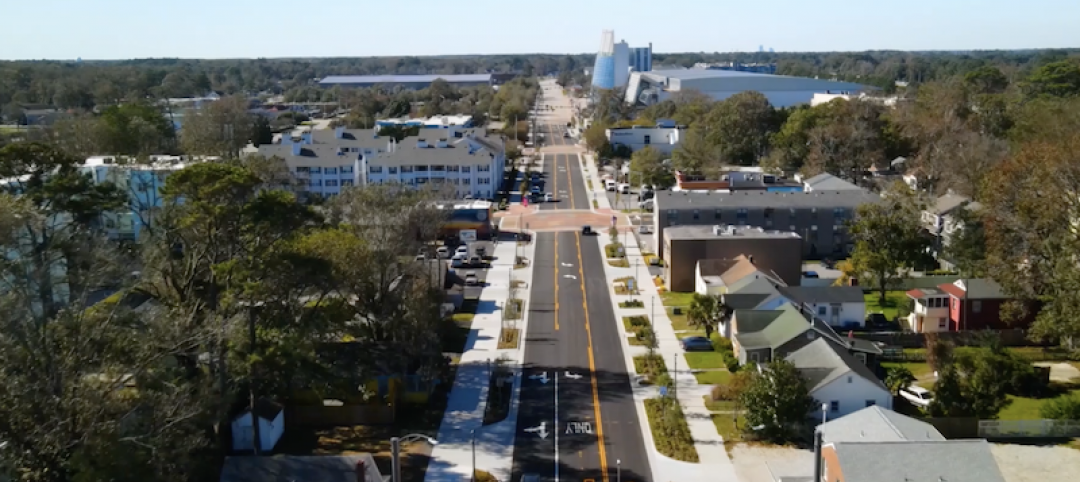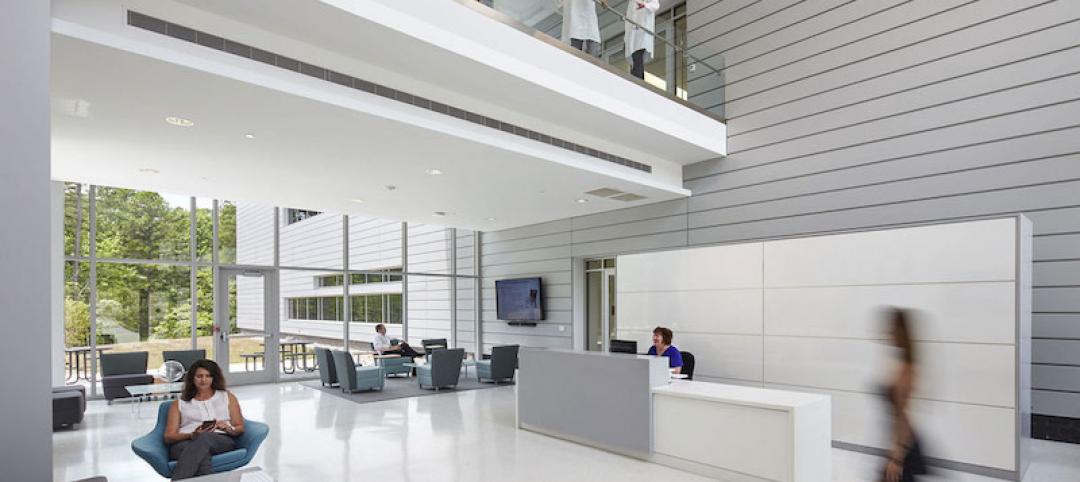Clark Nexsen’s Paul Battaglia and Susan Drew attended and presented at Future Offices 2019 in New York this winter. Between presentations, workshops, panels, and tours of cutting-edge office space, they gleaned some interesting takeaways for workplace design:
The Office & the Internet of Things
“There was a lot of conversation about how to use IoT, sensors, and the data gathered by them,” shares Susan, “how to manage it, how to leverage it. It really came down to fine-tuning the user experience – how does all this data make the environment better for workers.”
Paul refers to this as the “curated space,” saying, “In many ways, it’s an illusion – but it works because the space is intelligent, and IoT is clever enough to mine preferences and customize the space to those preferences – temperature, lighting, and so on.”
With the race for talent making recruiting and retention a hot topic, many believe the inclusion of exceptional technology that can enhance the workplace will give companies a competitive edge. Factor in possibilities to make operations more efficient and cost effective, and there’s no question IoT will continue to dramatically impact the office for years to come.
Liquid Workplaces – & the Death of the 10-Year Lease
The “liquid workforce” is driving a shift toward liquid workplaces – environments where flexibility reigns, from the space to the lease term. LiquidSpace, for example, offers hourly and monthly spaces as well as custom offices. As a real-time network for office space, their goal is to simplify the discovery and transaction of owning and renting space – for the individual to the 200-person firm.
Both big and small companies can take advantage of a more fluid approach to leasing space. Take Verizon, a Fortune 500 organization who’s administrative and support staff now utilizes a more flexible lease arrangement. These varied terms deliver the best of both worlds to companies and employees – branded space, amenities, and a vibrant environment – with the flexibility to adapt their workforce and environment at any time.
The Corporate Conscience
There is new sensitivity in corporate workplace design – it favors universal design, equity, inclusivity in many forms, and greater awareness of cultural issues. Artwork, for example, that once would have been considered unexceptional or simply representative of the organization’s past may no longer be appropriate to display. There is an attitude of “it can’t be for us without us” driving the implementation of technology to even the playing field for those of all abilities – the hearing or visually impaired, those with permanent disabilities, or other needs that demand truly universal design.
The Amenities Debate – In the Office, or In the Community?
While Amazon’s recent decision to abandon plans for a significant NYC campus is the most recent high profile example, the debate around the role of businesses in supporting their communities is inherently connected to amenities. A cafeteria located within a corporate campus, for example, may benefit employees – but it isn’t doing anything for the community businesses around the office.
Amenities are commonly thought of as dining, fitness, and social spaces, but for large companies looking to locate substantial numbers of workers, factors like affordable housing and infrastructure are critical as well. Urban, walkable locations undeniably make it easier for organizations to streamline their in-house amenities and promote employees’ use of community businesses – but real estate costs can be an obstacle. The creation of corporate towns offers a different set of solutions, sometimes coming to life as a master planned town center where office space is integrated with amenity businesses, but more commonly calling to mind the effort of a large organization to create a self-sufficient hub.
Working on the Cutting Edge
Paul and Susan both describe the M Moser Associates office as the most progressive environment they toured. A fellow design firm, cultural choices drive the way they use their office. It is dramatically flexible in every regard – no wires, no assigned seating, everyone has laptops, all furniture is on casters. This entirely mobile, versatile environment is kept uncluttered with a “clean desk” policy – at the end of the day, employees have a locker for all of their work materials and equipment. Each morning, they can opt to work in a different spot, take advantage of additional monitors, private spaces, and collaborative “living rooms.” Unsurprisingly, soft seating areas with views of the city go early.
Amidst the big picture topics mentioned above, wellness, biophilic design, and the ongoing debate around open office design were all discussed. Fundamentally, the future office will be informed by the workforce – the people actually using it – in a way it’s never been before. Paul summed the takeaways up succinctly, saying, “The offices of the future aren’t single locations or spaces – they will be networks with widely varied spaces that empower people to work effectively on the scale of both the individual and the group.”
More from Author
Clark Nexsen | Sep 30, 2024
The importance of selecting healthy materials for K-12 projects
Clark Nexsen interior designers Anna Claire Beethoven and Brittney Just, CID, IIDA, LEED Green Associate, share why it is imperative to specify healthy building materials in K-12 schools.
Clark Nexsen | Aug 1, 2024
How current and future trends are shaping the libraries of tomorrow
Over the last few years, public libraries have transitioned from being buildings that only store and lend books to being fully featured community centers.
Clark Nexsen | Apr 25, 2024
How pools can positively affect communities
Clark Nexsen senior architects Jennifer Heintz and Dorothea Schulz discuss how pools can create jobs, break down barriers, and create opportunities within communities.
Clark Nexsen | Oct 2, 2023
4 design strategies for successful K-12 magnet schools
Clark Nexsen's Donna Francis, AIA, Principal, and Becky Brady, AIA, share four reasons why diverse K-12 magnet schools require diverse design.
Clark Nexsen | May 17, 2023
Designing K-12 schools for students and safety
While bullying, mental health, and other acts of violence are all too common in schools today, designers have shown that smart and subtle preventive steps can make a big difference. Clark Nexsen’s Becky Brady shares how prevention and taking action at the design level can create safe and engaging learning environments.
Clark Nexsen | Jul 1, 2022
How to apply WELL for better design outcomes
The International WELL Building Institute (IWBI) cites attracting top talent, increasing productivity, and improving environmental, social or governance (ESG) performance as key outcomes of leveraging tools like their WELL Building Standard to develop healthier environments.
Clark Nexsen | Jun 3, 2021
What's next for workplace design?
Balancing personal space and the need for collaboration.
Clark Nexsen | Apr 1, 2021
The changing face of freshman and sophomore student housing
As part of a surge in new housing projects for freshman and sophomores, we are seeing increasing demand for double occupancy rooms and suite-style arrangements in both new construction and renovation projects.
Clark Nexsen | Feb 17, 2021
Best practices for streetscape design that cultivates community
Well-designed streetscapes provide a wealth of benefits for their respective communities.
Clark Nexsen | Oct 20, 2020
Best practices in S+T office design
Within the constraints of the typical COVID-19 office protocols, lab users face the additional challenge of working with hands-on processes, tight schedules, and shared resources.
















